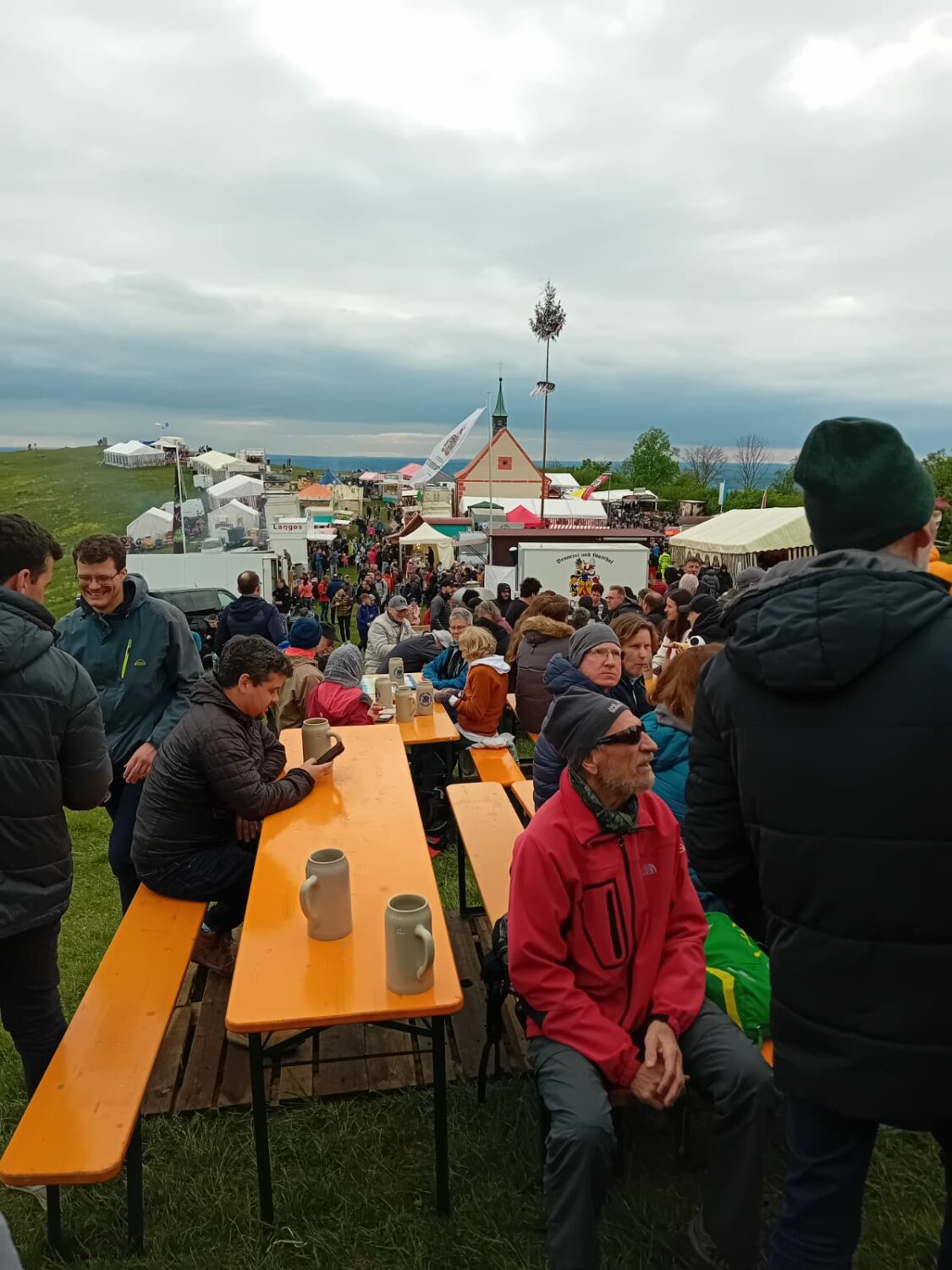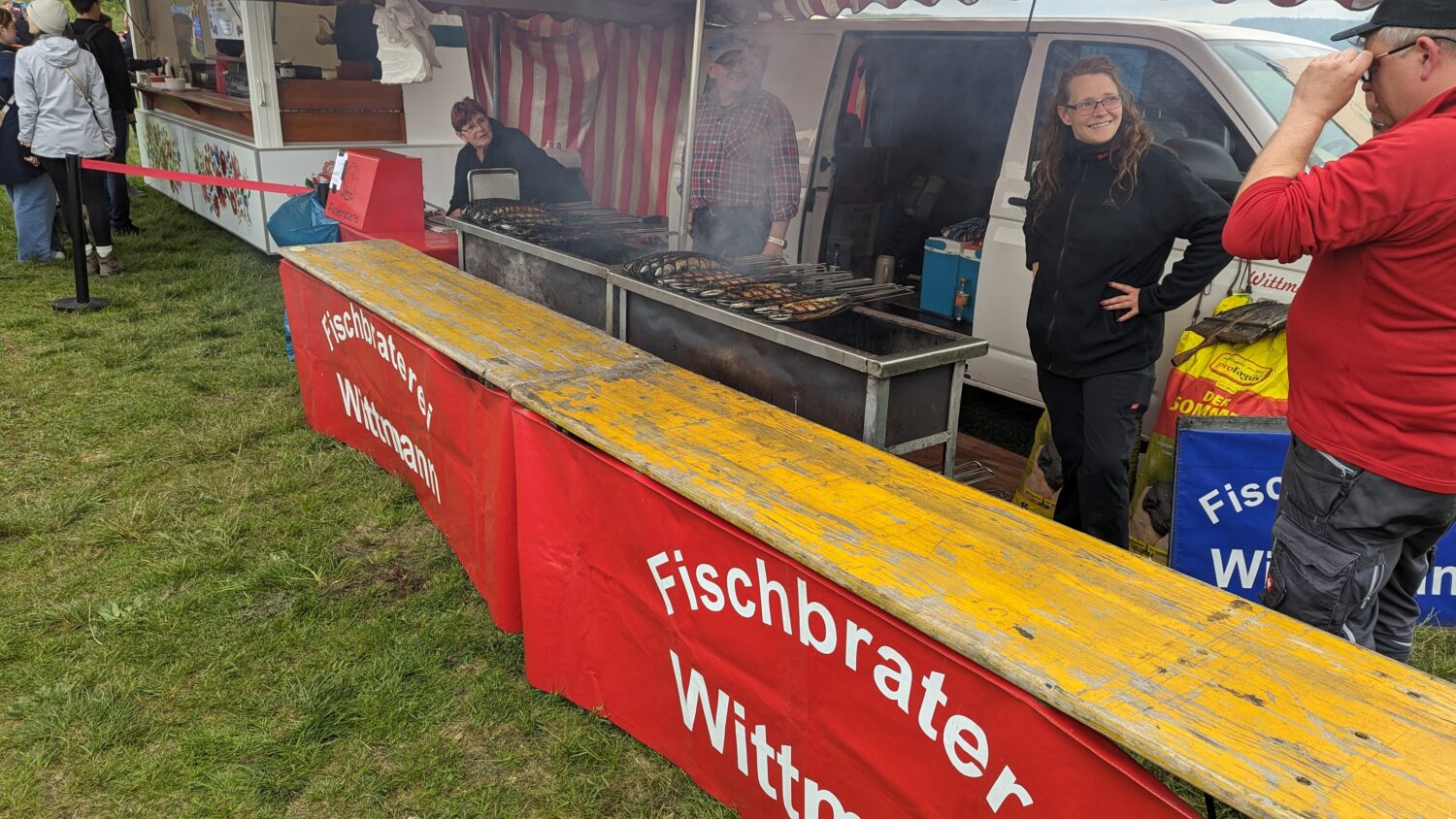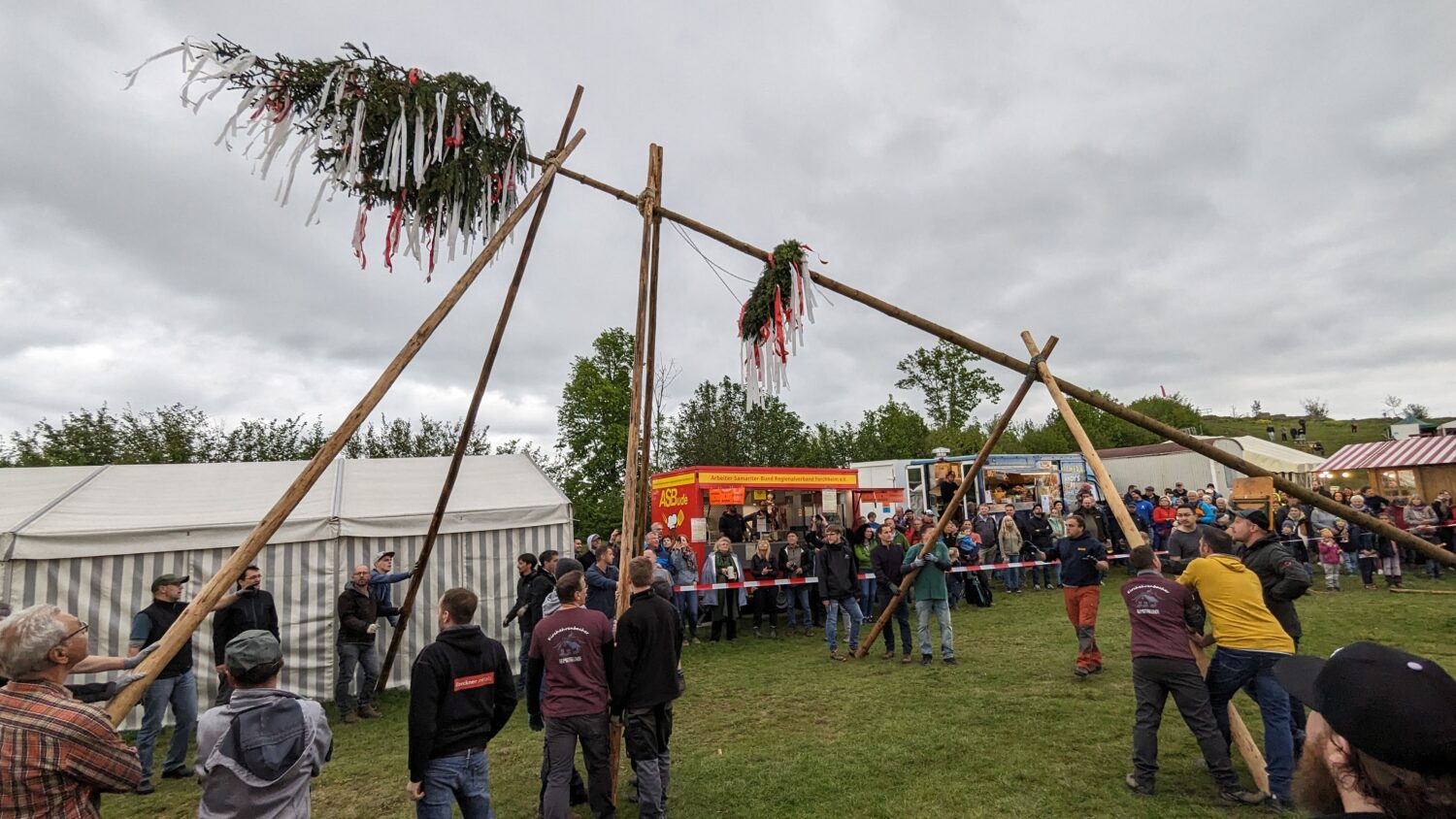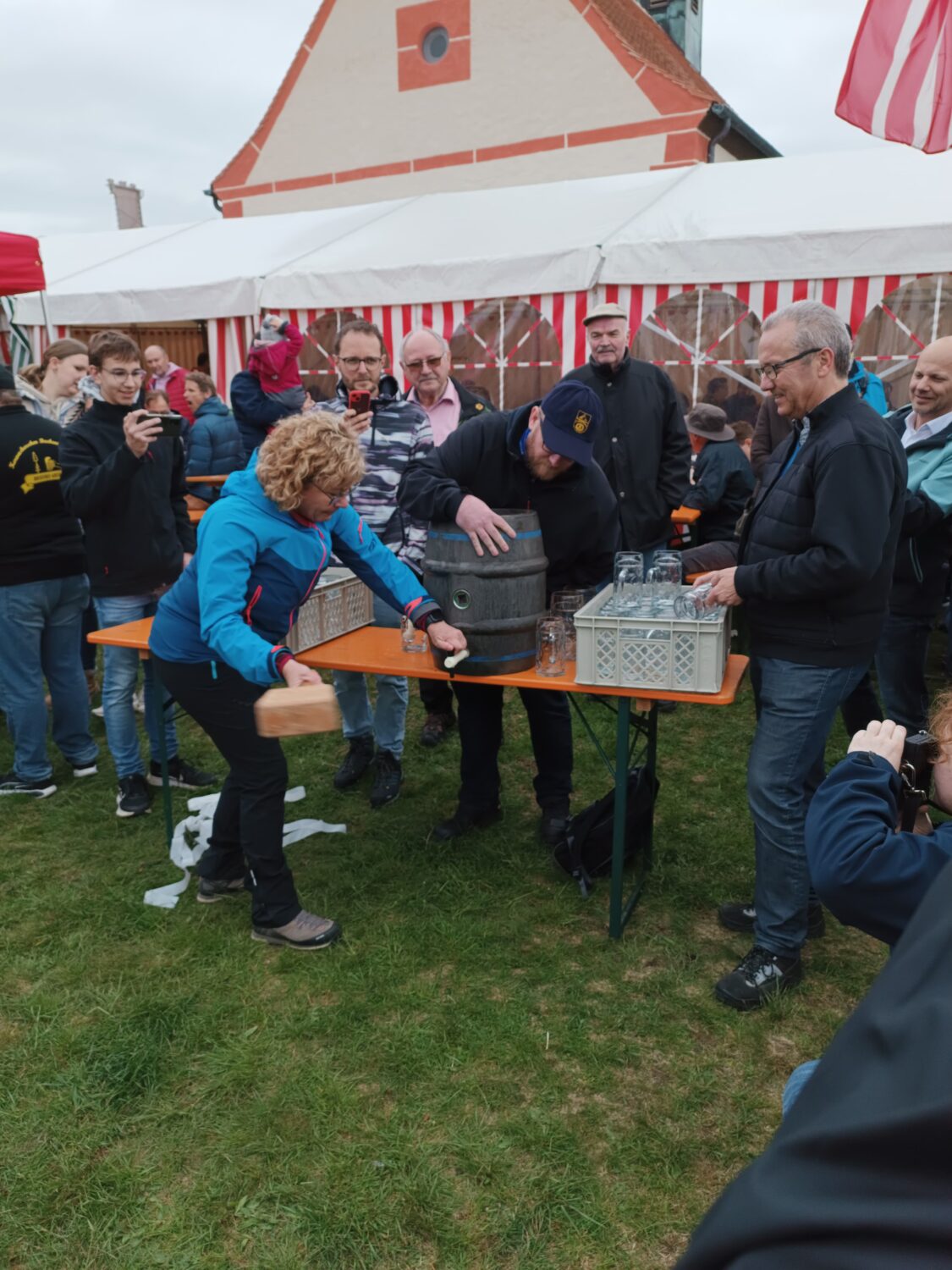A Letter From Walberlafest, the Ancient Hilltop Festival Still Thriving in Bavaria
By Gavin CleaverAre you ready for some 1800s German poetry?
Above Forchheim at Kirchehrenbach
Let’s go up on the hilltop
There on St. Walburga’s Day
The Franconian May-market dance is in full swing
Since dim days of heathendom
It has been dear to all people of the land
Darling, hold your belt and your dress tight
We’re jumping through the fire!
Exodus Cantorum – Bambergischer Domchorknaben Sängerfahrt, by Joseph Victor von Scheffel, 1863

This somewhat odd poem (it scans better in German, honest) was referring to a festival, the Walberlafest, that even by the time of writing in 1863 was 1000 years old, and still takes place in rural Franconia every year. I honestly can’t remember what I was searching for when I found this poem and subsequently the festival it’s written about, but given I was in the area and there are vanishingly few English language sources about the festival, I thought it would be rude not to attend. So I did.
Here’s what I knew about it before going: it’s an old pagan festival that has records dating back to the 9th century, the hill it takes place on has a record of human sacrifice and possibly cannibalism, and that it featured stalls from all of the best local breweries around Franconia, an area of Bavaria that prides itself on the kellerbier (“cellar beer”), a special kind of unfiltered lager where the carbonation is kept low to make it easier to drink unholy amounts. It was the latter fact I was leaning on rather to persuade friends to accompany me to the gathering, rather than the more Wickermanny edge it so clearly gave off.
Here’s what I know about the festival now I’ve attended – it’s up a massive hill. I’m not sure “hill” quite does it justice, although I’m sure the elderly German couples overtaking me, bent double and leaning on a rock, during the ascent, would disagree. The Walberla is one of two peaks on a crazy-looking double-crested plateau, over 500m (more than half the size of Scafell Pike, the highest mountain in England) above the surrounding spectacular scenery, which the locals (or possibly the local tourist board) dub “Franconian Switzerland” for its deep forests and sheer cliff faces. Given there’s no flat land at the festival and it’s got two extremely sheer drops at each side, quite honestly it’s an absolutely mental place to hold a festival.

The undoubted highlight besides the stellar scenery and beer is the ceremonial raising of the Maypole, a 50 ft-tall thin pine tree shorn of branches, which arrives on a death-defying tractor journey up the sheer hill face. Naturally, the tractor then takes no part in actually erecting the Maypole, a job it could do in minutes, and instead a team of about 20 locals take a full 90 minutes to insert the pole into the ground using a combination of tables, other trees, and ropes, all while drinking from litre mugs of beer and singing in German. Health and safety concerns are jettisoned as hundreds of people crowd round to watch an unsupported tree, ceremonial wreath nailed to the far end, dangle precariously on the flat edge of a table. A local told me this rope-balancing spring dedication is just how it had always been done. She then, as is typical of anyone you might speak to in this part of the world, invited us all to stay at her house next year.
When a man with a massive hammer in one hand and a litre of beer in the other had finished hammering in support poles and the Maypole was officially erected, there is a short period of traditional dancing before the mayor of Kircherenbach, the town at the foot of the Walberla, hammers a tap into a keg and starts pouring everyone beers. I have no idea where the mayor got her beer from but it’s one of the best on the hill, a high bar given that the festival standout, the Brauerei Greif kellerbier from nearby Forchheim, is a quasi-religious experience in itself. Nursing a few kellerbiers and sitting on the grass looking out over a “valley” which is actually a ridge half a kilometre above the forest is a truly superb way to spend an evening.

Unfortunately for those hoping for some sort of Wickerman-style conclusion, the festival itself is really of the sort you might expect to find in one of the less glamorous London parks over the summer – carnival rides (albeit with an added element of peril given they’re near a cliff face), throw a thing onto another thing games for cuddly toys, and fried foods. However, since this part of Germany prides itself on carp production, the most common fried food you’ll find is a whole carp, crisped over the flames and creating a smoke which envelopes this curious little festival in a mist as the evening darkens. I can report no belt-holding, nor jumping through fires this year. Walberlafest is an ultra-local event, to the extent that the people we were renting a house from in nearby Gosberg found us for a quick prost, and then led us down the hill to a more adult-level afterparty, featuring blaring Europop DJs and more pints.
It’s best to make the descent down the hill before it gets pitch black, for obvious reasons. In the extreme dark of the German countryside, a member of our intrepid team of adventurers managed to fall into the same ditch three times. He said by the third time it wasn’t as bad because he’d figured out the ditch’s tactics.

Walberlafest takes place across the first weekend of May every year just outside Forchheim, which is 30 mins by train north of Nuremberg. The ceremonial Maypole raising takes place at 5pm on the Friday.
Header image: Festival before kick-off by Gavin Cleaver.